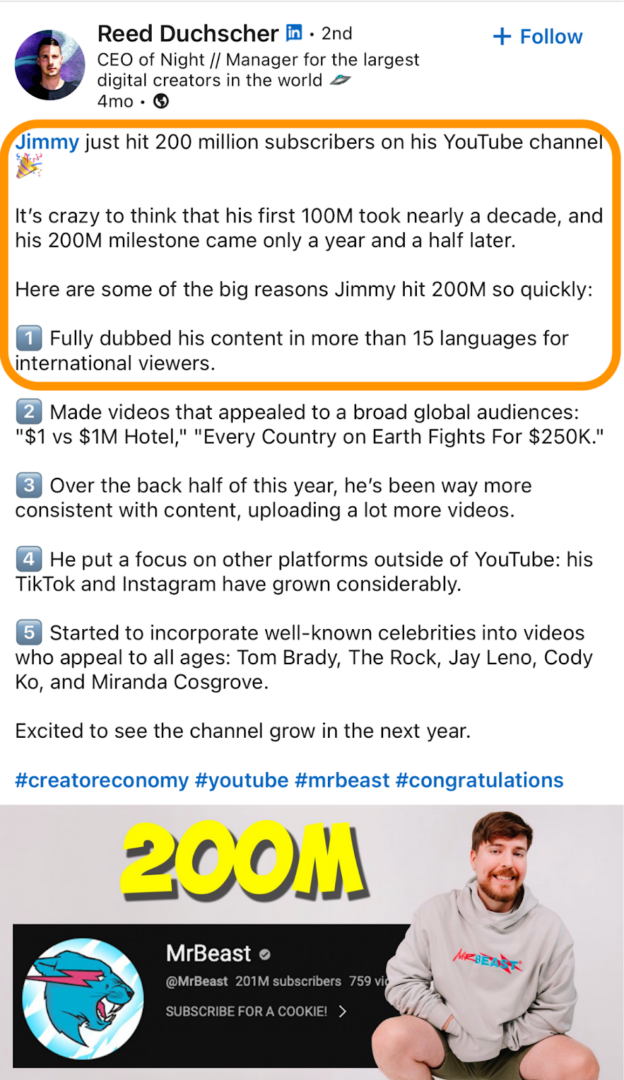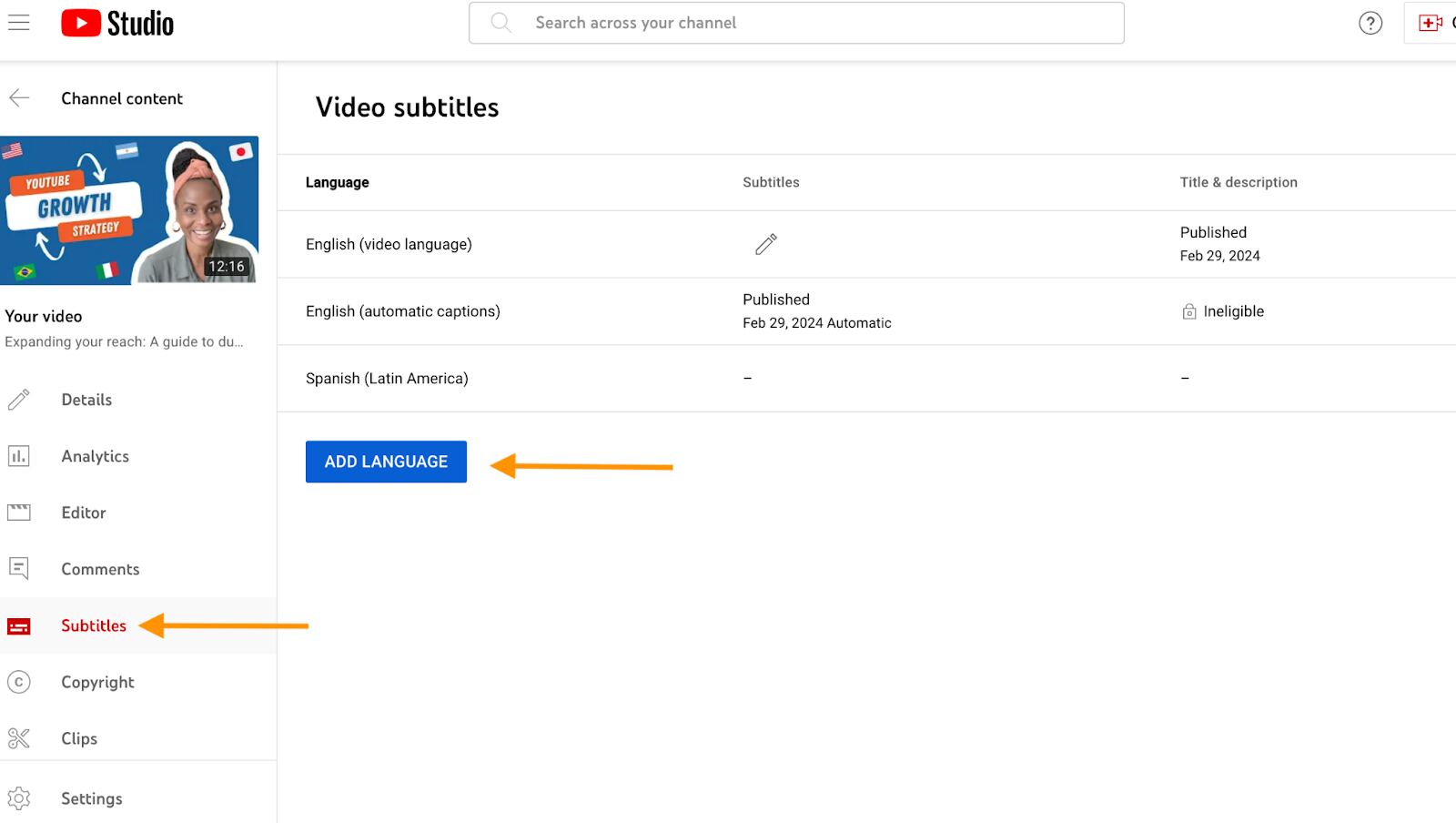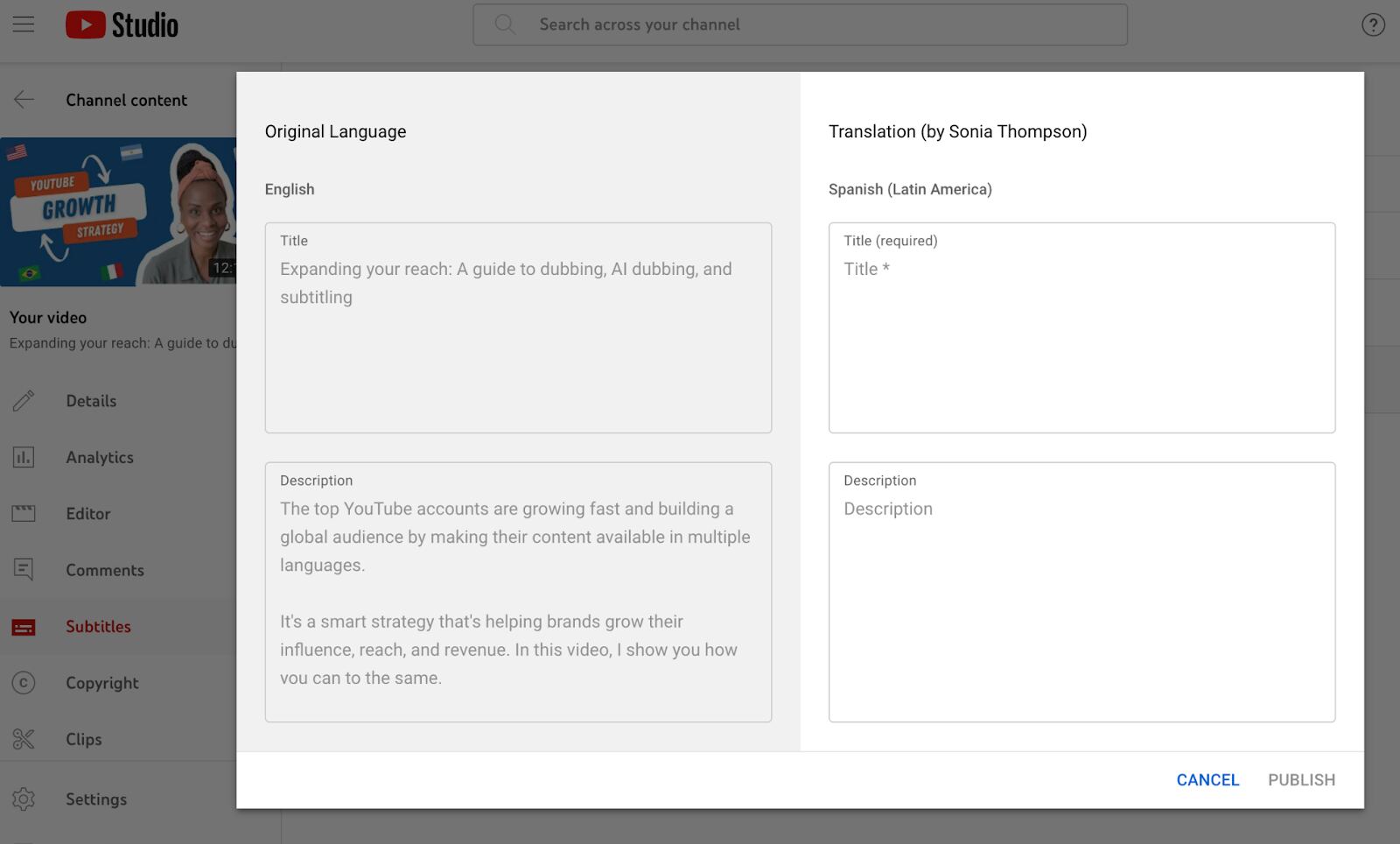
- Shop
- (Untitled)
- Smart Shopper
- Deals
- Gift Ideas
- Lifestyle
- New Discoveries
-
Featured
-
Featured
- Recent
-
Select Page

YouTube expansion strategies continue to be a hot topic among marketers. In fact, most entrepreneurs plan to increase their YouTube budgets this year and say the platform will have the best possible expansion in 2024.
Whenever there is talk of YouTube expansion (and I talk about expansion a lot as the founder of Thompson Media Crew), Jimmy Donaldson’s Mr. Beast channel is at the top of the list.
It’s easy to see why. Over the past few years, Mr. Beast’s YouTube channel has 240 million subscribers, the second highest of any channel on the platform. There are many explanations as to why this channel is so popular, but the method I most like to recommend to my clients is to broaden their vision of who their end buyer is.
What is the million dollar method to uncover your target audience and buyer base? The answer is strangely simple: inclusion advertising. Yes, that’s right. I’ve built an entire consulting spherical project helping manufacturers scale with inclusion in promotion and membership, and I’ll spot a much better method from a mile away.
For example, Mr. Beast uses inclusion promotion by offering its content in multiple languages. Reed Duchscher, its capacity manager, explains that this is one of the main forces that drive its rapid growth.

The correct process here is simple: Get your content and products known to other people who have the problem. your emblem solves. More qualified eyes indicate other people who consume your content and buy your products.
Globalization as a lever for expansion is nothing new. That’s why you’ll see McDonald’s, Netflix, and Nike developing localized content around the world.
Keep in mind that a singular language does not mean that we do not have the same problem or that we cannot benefit from the same solution.
As an inclusive promotion strategist and advertising consultant, I tell my clients that it has never been easier or cheaper to expand your brand through the use of in collaboration with a wider range of consumers. I spend a lot of time talking about good techniques for using inclusive promotion as a lever for expansion on my podcast, Inclusion & Promoting and advertising.
This episode delves into the topic of expanding your brand through globalization, along with localizing your content topic.
And now it’s not just Mr. Beast who’s adopting this system.
Cocomelon, Kids Diana Show, and Like Nastya have all earned coveted spots in the top 10 most subscribed YouTube channels. How? Each of them makes their content available in multiple languages, and have earned tens of hundreds of thousands of fans in the process.
Think this is just for kids’ cartoons and hype engines? Think again. Even business-focused producers like GaryVee, VidIQ, and IKEA are embracing inclusion.
Those that creators are not increasing dozens of assets at a time. They are increasing a video and localizing it into other languages through dubbing and voiceover.
Once the topic of the dubbed content is created, creators use two approaches to get the topic of the localized content across to their audience.
Cocomelon, Kids Diana Show, and Like Nastya all have YouTube channels, each faithful to a specific language.
Kids Diana Show has 119 million subscribers to the English-language channel type. It has added over 72 million additional subscribers, with the language channels website hosting the same content, but localized.
As Nastya has 113 million subscribers on her English-language channel. Her emblem has over 82 million additional subscribers on other language channels.
Commercial channels have also found their niche here. VidIQ has 1.78 million subscribers on its English-language channel. And they’ve added another 351,000 subscribers on their Spanish-language channel alone.
The exception here is Mr. Beast, which in the past hosted several channels dedicated to a reasonably large number of languages. In 2022, the situation has changed.
This time Spherical, YouTube started working with perfect creators like Mr. Beast to try out multilingual audio. This new feature allowed us to keep an eye on a channel by uploading different audios, thumbnails, and descriptions to their accounts.
When a customer comes across the video, it is routinely confirmed to them in their local language. This allows creators to deliver a seamless shopping experience for their target audience, as well as being further responsible for the content topic being pleasant for the atmosphere.
YouTube is well aware that creators who have tested this multilingual audio feature have found that 15% of their watch time came from views in the video’s non-primary language.
While this feature isn’t available to all accounts, YouTube plans to gradually roll it out to more creators.
Regardless, you need to imagine the shopping experience you are offering to your target audience.
Over the years, I have interviewed dozens of consumers with identities from underrepresented and underserved communities. One not-so-unusual frustration they share is the feeling that manufacturers have fallen into disrepair because of the poor reviews they give them.
A Spanish-speaking buyer told me that when producers don’t make their content available in Spanish, it seems like they’re sending the message that “Spanish speakers aren’t needed.”
For groups of excited new buyers, I always teach my clients to be intentional about providing reviews that make buyers feel truly recognized, cared for, and needed rather than an afterthought. As a result, other parents you serve will truly feel like they belong.
The most important service of this system is to create video content that is accessible to people who speak other languages. Alternatively, there are many methods to achieve this.
Here is a practical guide, a video where I review some of these alternatives and provide examples and problems for each of them. I also leave some comments and feedback from a Spanish-speaking buyer.
Many modern YouTube channels, including Mr. Beast, use a company called Unilingo to dub their movies using professional translators and voice-over skills.
While you have ever watched a movie with audio in every different language, keep in mind that utmost care is taken to ensure that the voiceover sounds and sounds like the original. The tone is compatible and synchronicity sends a better experience to the main customer.
Keep this in mind as a second way to delight your target audience by collaborating with a human voice actor who is skilled at capturing the energy, emotion, and intonation of the original speaker.
Fair enough, fair enough. I know I just informed you that I was using human-voiced content. But I know that sometimes that is just not possible.
While you may not have noticed, {the market} is flooded with AI devices right now. This means you have options for dubbing using artificial intelligence. Simply upload your video, select a voiceover of your choice, and in a few minutes you will have a dubbed video.
When using this option, the translated text must be verified by certified translators before publication.
While AI translations are often superb, there are nuances associated with localizing the content topic. You’ll also need to address the voice and tone of your emblem, something that can be difficult to grasp with a taste for language learning.
Artificial intelligence will translate the content of your material verbatim when what you are actually looking for is transcreationIn a transcreation, you choose words and phrases that capture the full purpose and essence of what you are announcing.
In the podcast episode below, I’ll dive into translation, transcreation, and possible proactive alternatives you’ll need to take when localizing your content topic. For example, should your logo use gender-neutral language (gender-neutral language is quite common in languages like Spanish and French), and if so, how should you address nuances here? These alternatives will have a big impact on how other people perceive your logo.
Subtitles are a different way to make your YouTube videos more accessible. You will upload some subtitle information in multiple languages at once to your YouTube content studio.

YouTube also offers the ability to add localized video thumbnails, titles, and descriptions to provide a seamless experience in the end customer’s local language.
When a customer comes to your video, they will focus on your original audio and look for subtitles in their most popular language.

The same laws apply when you are guaranteed to have a high-quality subtitle translation that has been transcreated and verified by human translators.
To grow your YouTube channel and business, first think about your current target audience.
Start where you want and improve over the years as you learn more about what your new global target audience needs most from you.
As you get into the groove of accelerating content reach through inclusion, you’ll amplify new relationships with new audiences that could allow them to reach new levels of great fortune. And at the end of the day, that’s your job, right?

![]()
[ continue ]
wordpress Maintenance Plans | wordpress hosting
Learn more